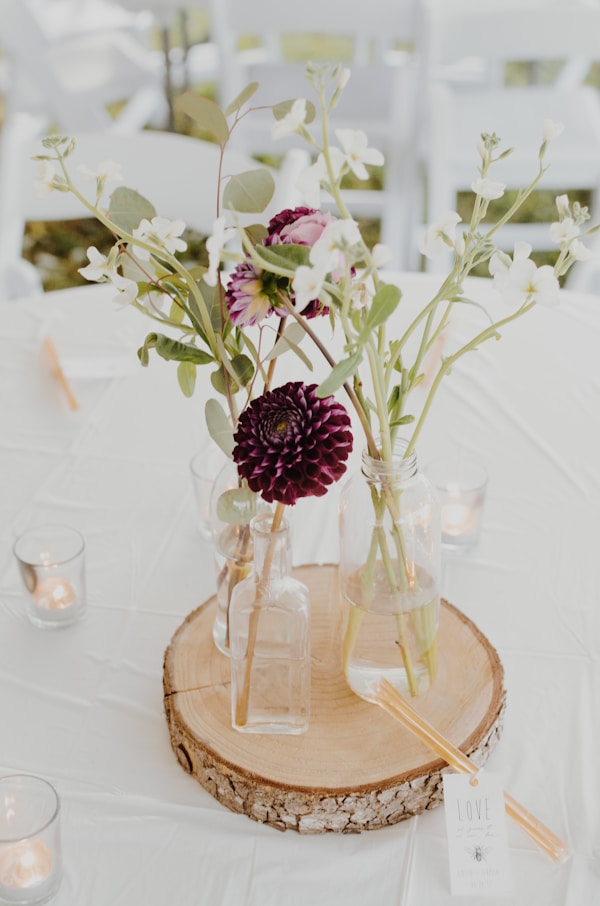Essential Tips for Crafting Your Dream Custom Wedding Dress
Essential Tips for Crafting Your Dream Custom Wedding Dress
Your wedding day is one of the most significant moments in your life, and a custom wedding dress can make it even more special. Whether you're getting married in a grand venue in New York, an intimate gathering in Los Angeles, or a picturesque beach in Hawaii, having a dress that embodies your unique style and personality is crucial. In this article, we’ll explore essential tips for creating the perfect custom wedding dress, ensuring you look and feel your best on your big day.
1. Understand Your Style
Before embarking on the journey of designing your custom wedding dress, take some time to understand your style. This is key in achieving a dress that represents who you are. Consider exploring various styles, such as:
- A-line: Flattering for most body types.
- Mermaid: A fitted design that accentuates curves.
- Ball gown: Perfect for a fairytale wedding.
- Sheath: A sleek and modern option.
Spend time gathering inspiration from bridal magazines, social media platforms like Pinterest and Instagram, or even real wedding blogs to identify what you truly love. Remember to create a mood board or a scrapbook to help visualize your ideas.
2. Set Your Budget
Custom Wedding dresses can vary significantly in price based on design complexity, fabric choices, and tailor expertise. Setting a realistic budget is essential to ensure you stay on track and avoid overspending. Below is a general breakdown of costs:
| Cost Component | Estimated Amount |
| Fabric | $100 - $500 |
| Design Consultation | $150 - $300 |
| Tailoring Fees | $300 - $1,000 |
| Embellishments & Accessories | $50 - $700 |
| Total Estimate | $600 - $2,500+ |
When setting your budget, always account for alterations, fittings, and potential additional costs as you finalize your design.
3. Choose the Right Fabric
The choice of fabric can make or break your custom wedding dress. Consider factors like comfort, drape, and overall aesthetic. Here are some popular fabric options:
- Satin: Luxurious and smooth, perfect for formal looks.
- Chiffon: Lightweight and flowing, ideal for ethereal styles.
- Lace: Adds a romantic touch to any gown.
- Organza: Crisp and voluminous, great for layers.
- Silk: Soft and breathable, works well for summer weddings.
Additionally, the fabric can impact how the dress fits and feels. Be sure to discuss your fabric choices with your designer, as they can provide recommendations based on their experience.
4. Find a Talented Designer
Your designer will play a critical role in bringing your vision to life. Research local custom dressmakers and read reviews from previous clients. Ask for recommendations from friends or family who have had positive experiences. Consider the following when selecting a designer:
- Portfolio: Evaluate their previous work to see if their style aligns with your vision.
- Communication: Ensure they are open to understanding your ideas and preferences.
- Experience: Look for someone experienced in custom Wedding dresses, as they will better understand construction and design.

5. Schedule Multiple Fittings
Fittings are crucial for achieving the perfect fit. It’s advisable to schedule multiple fittings to ensure every detail aligns with your expectations. During your fittings:
- Communicate any concerns or adjustments needed.
- Try on different undergarments to see how they affect the fit.
- Consider bringing your wedding shoes for a complete look.
A good rule of thumb is to have at least three fittings scheduled before your wedding day, which allows time for necessary alterations.
6. Don’t Forget About Comfort
While the aesthetic of your custom wedding dress is critical, comfort should never be overlooked. Your wedding day will likely be long, filled with multiple activities and socializing. Ensure your dress allows for movement and fits comfortably without restrictions. Consider the following:
- Choose a manageable train length.
- Ensure the bodice provides proper support.
- Test the dress by sitting, walking, and dancing during fittings.
7. Incorporate Personal Touches
Custom Wedding dresses give you the freedom to incorporate personal touches that reflect your journey as a couple. These could include:
- Family heirlooms or vintage lace.
- Embroidered initials or wedding dates.
- A unique color or pattern that has significance to you and your partner.
These elements will create a dress that tells your story and will be cherished for years to come.
8. Plan for Preservation
After your wedding, you may want to preserve your custom wedding dress for future generations or for sentimental reasons. Here are some tips for preserving your dress:
- Steam rather than iron to remove wrinkles.
- Store it in a cool, dry place away from sunlight.
- Use an acid-free box for storage to prevent yellowing over time.
Consider consulting a professional dress preservation service that specializes in Wedding gowns.
Conclusion
Creating a custom wedding dress is an exciting journey filled with personal expression and creativity. By following these essential tips—from understanding your style and setting a budget to selecting the right designer and fabric—you can craft a dress that perfectly aligns with your vision. Remember, comfort and personalization are key to ensuring you feel confident and beautiful on your special day. When it comes to your wedding, every detail matters, and your custom wedding dress should be a reflection of your love story.
Stay organized, adhere to your timeline, and communicate openly with your designer. This will ensure your experience is as seamless as possible. Embrace every moment, and your custom wedding dress will undoubtedly become a cherished part of your wedding day memories.
